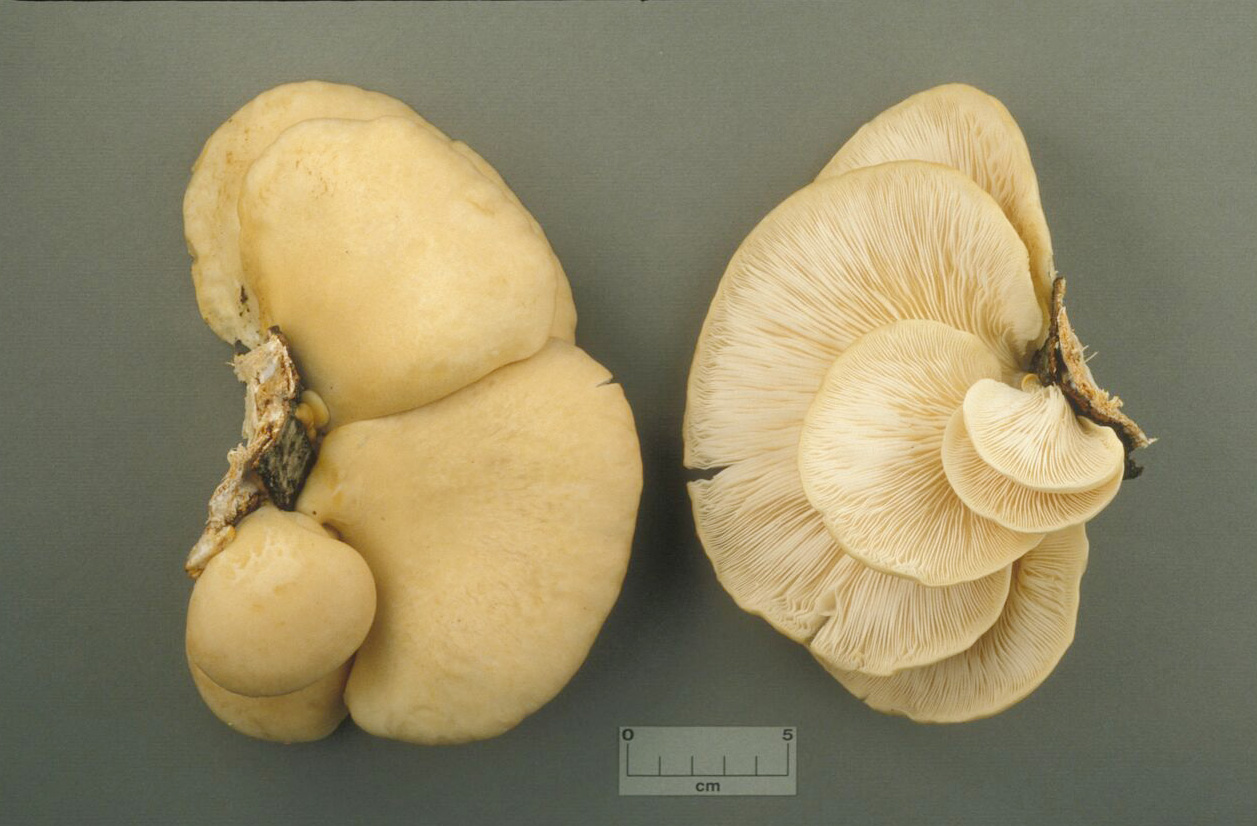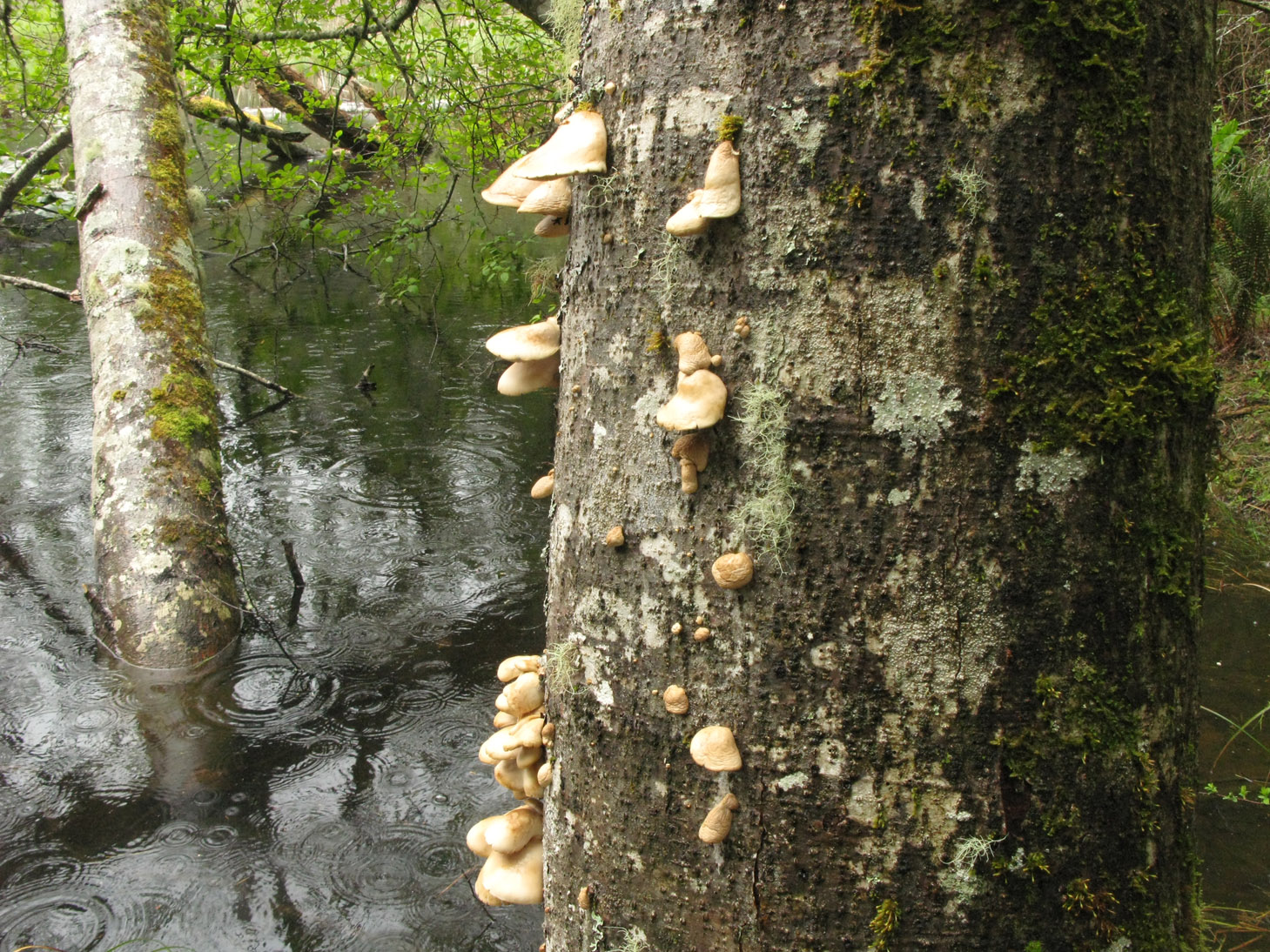Pleurotus pulmonarius — Oyster mushrooms
Odour: Pleasant
Cap: 5–25 cm in diameter, not round, but fan- or shell-shaped with a stem that is off-centre, at the side of the cap. Starting out rounded, but with age becoming flat or wavy. The colour is white to grey-brown, or purplish grey. The surface is smooth and dry.
Gills: Decurrent, descending down the stem, well-spaced to crowded, white to buff.
Stem: 0.5–3 cm long x 0.5–2 cm wide, short or almost absent, usually lateral rather than central, pale coloured. The surface is smooth, sometimes with hairs or fluff at the base.
Ring or veil: None.
Cup: None.
Spores: 10–14 x 5.5–7 µm, smooth.
Habitat: Fruiting in shelf-like, overlapping clusters or singly, on branches, trunks and logs of deciduous trees such as alder (Alnus sp.), cottonwood and aspen (Populus spp.), and willow (Salix sp.). Easily cultivated on all kinds of substrates (coffee grounds, saw dust, straw bags, wood chips etc.), and therefore commercially grown.
Geographical range: In northern and mountainous regions of North America, also Europe and Asia.
One of the few poisonous mushrooms that could conceivably be mistaken for an Oyster is the Jack-o-lantern mushroom (Omphalotus olivascens). Jack-o-lantern mushrooms resemble Oyster mushrooms in form and like them, they grow on wood. However, jack-o-lantern mushrooms are orange or olive to ochre in colour rather than white or beige; they have yet to be reported from BC, and the few records from Oregon and Washington have yet to be verified5.
Other mushrooms with a lateral stem include the angel wings (Pleurocybella porrigens), which grow exclusively on wood of coniferous trees and are pure white, with flesh so thin that the cap is almost translucent. Angel wings had been considered edible but can no longer be recommended because in 2004 in Japan, 59 people were hospitalized and 19 died after eating the species7. Hohenbuehelia species have a gelatinous layer under the cap surface and may be shoehorn or funnel shaped rather than shelf-like as in oyster mushrooms. Crepidotus species are usually smaller, thin-fleshed, with brown spores.
Treatment: Contact your regional Poison Control Centre if you or someone you know becomes ill after eating oyster mushrooms. Poison Centres provide free, expert medical advice 24 hours a day, seven days a week. If possible, save the mushrooms or some of the leftover food containing the mushrooms to help confirm identification.
Poison Control:
British Columbia: 604-682-5050 or 1-800-567-8911.
United States (WA, OR, ID): 1-800-222-1222.



